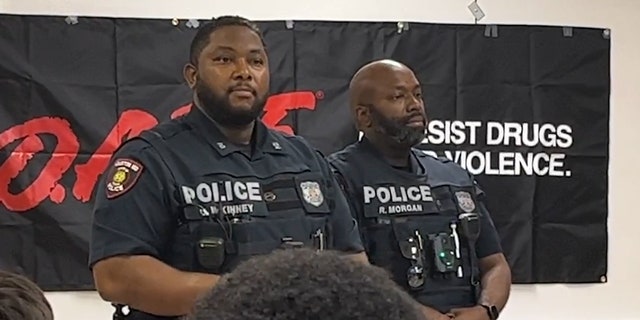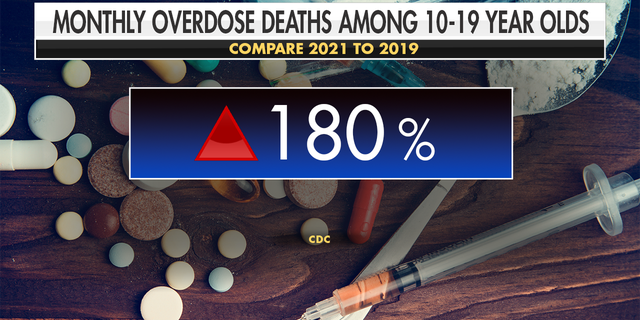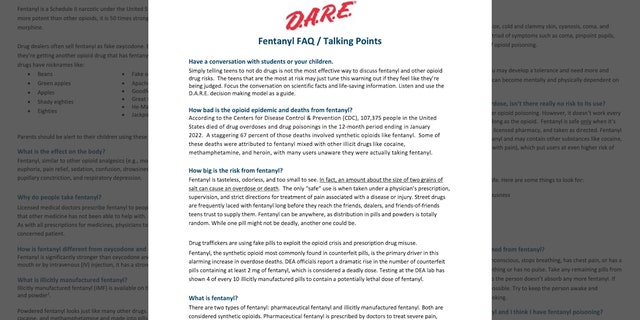Drug education program in schools to include focus on fentanyl: ‘Just Say No was not enough’
Houston, TX – The current fentanyl crisis has caused a shift in drug education. Now, schools and police departments feel children as young as the 5th grade should learn about the dangers of hard drugs.
The D.A.R.E. America program has been around since 1983, and originally taught kids to “Just Say No to Drugs.” Now, its message is changing, and Venina Smith says her son could have benefited from the updated curriculum.
“My son passed away on Sept. 16, 2020, from fentanyl poisoning. He was 40 when he passed away, and he had been dealing with addiction and mental health for a number of years since he was a teenager,” Smith said.
Smith said her son’s drug addiction started in middle and high school even though he received D.A.R.E.’s police-led Drug Abuse Resistance Education. She believes the program needed an upgrade.
WASHINGTON FATHER WHO LOST TWO SONS TO FENTANYL OVERDOSES PLEADS FOR CONGRESS TO CRACK DOWN ON DRUG DEALERS
“It was outdated. ‘Just Say No’ was not [enough],” Smith said. “Just say no, but say no to what?’
Now, the federally-funded program’s curriculum has shifted to “Keeping It Real.”
Dennis Osborn serves as D.A.R.E. America’s western regional director. Osborn says the updated curriculum helps bring awareness to the harsh realities of new drugs and the consequences of addiction.

“We start teaching them in about the 8th grade, and middle school, about addiction cycles and how the brain works and how it can get addicted to certain substances like heroin, fentanyl, opioids,” Osborn said.
TEXAS SCHOOL DISTRICT ON THIRD FENTANYL OVERDOSE DEATH AS POLICE MAKE FOURTH ARREST CONNECTED WITH DRUG DEALS
The CDC reported monthly overdose deaths involving fentanyl for people ages 10 to 19 increased over 180% from 2019 to 2021.

The Houston Independent School District re-initiated it’s D.A.R.E. program in the fall of 2020. Brittany Burden, who serves as a Houston ISD D.A.R.E. officer, said drugs are changing and advancing – daily.
“Five or 10 years ago, we didn’t know exactly the extent of the problem with fentanyl, and so now our kids are exposed to it. They can get it as easily as it being in some food or getting from some candy from one of their classmates,” Burden said.
In 2021, D.A.R.E. added a fentanyl fact sheet to its program – a change Smith says could help save lives.

“Some children start experimenting at about 12,” Burden said. “If we don’t get the message out about what these drugs are doing, and how fentanyl is involved with a lot of these illegal drugs, kids will think ‘oh, it might be OK.'”
D.A.R.E. reports approximately 6,000 law enforcement agencies – nearly one-third of America’s departments – incorporate their officers in schools across the country.
In addition to a newfound focus on fentanyl education as the opioid crisis rages, there are other school programs similar to D.A.R.E., such as The All Stars Core Program and the Child Development Project, that address teen suicide and social media safety awareness.
Read the full article Here


